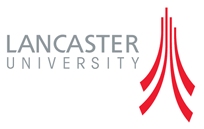

Intellectual Party: Lancaster Sociology Summer Conference 2014
Thinking space in Lancaster
'The Third Day' – Wednesday, July 9th 2008
For those who do not wish to go on the coach trip to the Lake District there will be two, alternative, research-oriented activities based at the University that will both involve visiting the City of Lancaster and considering it from different perspectives.
The first workshop will focus on the process of writing an excellent grant proposal based on some concrete research questions, the second activity will employ a less well-known sociological method of gaining an in-depth understanding of space.
The activities will take place on campus and in Lancaster city centre, and include presentations of the outcomes of each activity to all participants. With a 9:30 start we aim to finish around 3pm.
More......
1. Scoping survey
The Bailrigg Research Council (BRC) has issued a call for applications to undertake research that will lead to an improved understanding of sociability in public spaces. The call says:
“The BRC wishes to further understanding of how public spaces in city centres contribute to or inhibit sociability. It is intended that this information should be available to planners, architects and city managers to help them promote sociability in the face of the following changes to the material environment of cities:
- the impact of new buildings; change of use of buildings; accessibility of buildings
- the effects of roads; means of transport; vehicles (motorised, ridden, pushed)
- the use of new technologies (mobile phones, personal music players, computers, GPS/Sat.Nav etc.)
Applications proposing research should set out the key themes, research questions, the methods to be used, the resources required and the time frame needed.”
To help prepare the application, the research group will take undertake a ‘scoping survey’ of Lancaster City Centre to give some preliminary indications and examples of the issues that would be undertaken in the research. It is suggested that the group visit key zones of public space in the City (e.g. the bus station, the railway station, Dalton Square, the Marketgate Shopping Centre, St. Nicholas Arcades, Market Square, St. Mary’s Parade). In the context of these public spaces they will be able to think about sociability and how the material environment enhances or restricts it. They can explore appropriate methods – such as observation, informal interviewing, visual methods – and consider appropriate research questions.
After returning to the University, the group will reconvene to draft a research proposal in response to the BRC call. In the final session they will present their proposal to the other group.
2. A dérive in Lancaster
The surrealist movement in the first half of the twentieth century developed a number of techniques to disturb the relationship between people and the world they live in that had creative, exploratory and political aspects. ‘Automatic writing’, aimed to bring the subconscious flow of words and thoughts into the fixed material form of a text and challenged the cultural rigidities of creative writing. ‘Détournement’ took an existing work of art and changed or added to it, to challenge the authority of the original artist and the status of her or his art works. The ‘found object’, often gathered at flea markets or bric-a-brac stalls, was invested with aesthetic and functional status that was never intended by their original designers. The dérive was another of these devices which operated as movement through space. It involves a sort of aimless, drifting through urban settings – in Debord’s theoretical account he describes it like this:
One of the basic situationist practices is the dérive, a technique of rapid passage through varied ambiences. Dérives involve playful-constructive behavior and awareness of psychogeographical effects, and are thus quite different from the classic notions of journey or stroll. (Debord 1958)
The second group will take a dérive through Lancaster, opening themselves up to the experience of drifting through a City that is normally treated as mapped, with routes, roads and paths that traverse it according the needs and requirements of people. The dérive can expose long forgotten paths and ways of using the City that have been superceded, it may lead to sights and scenes that would be obscured in functional use and it may produce an awareness of the space, including hidden spaces and dead ends, that would for most City users be ignored. New ways of getting to one place from another – not necessarily by the shortest route – can be discovered and new responses to familiar places can be evoked once moving through the City is approached in a less purposeful way:
In a dérive one or more persons during a certain period drop their usual motives for movement and action, their relations, their work and leisure activities, and let themselves be drawn by the attractions of the terrain and the encounters they find there… But the dérive includes both this letting go and its necessary contradiction: the domination of psychogeographical variations by the knowledge and calculation of their possibilities. (Knabb 1995: 50)
The dérive group will prepare a ‘psychogeographical map’ of their experience and present it to the other group. It is hoped that the two experiences of the same City space will be contrasting and that points of similarity and difference will stimulate discussion and thought about research methods appropriate for space and materiality.
N.B Lunch and refreshments are not provided.